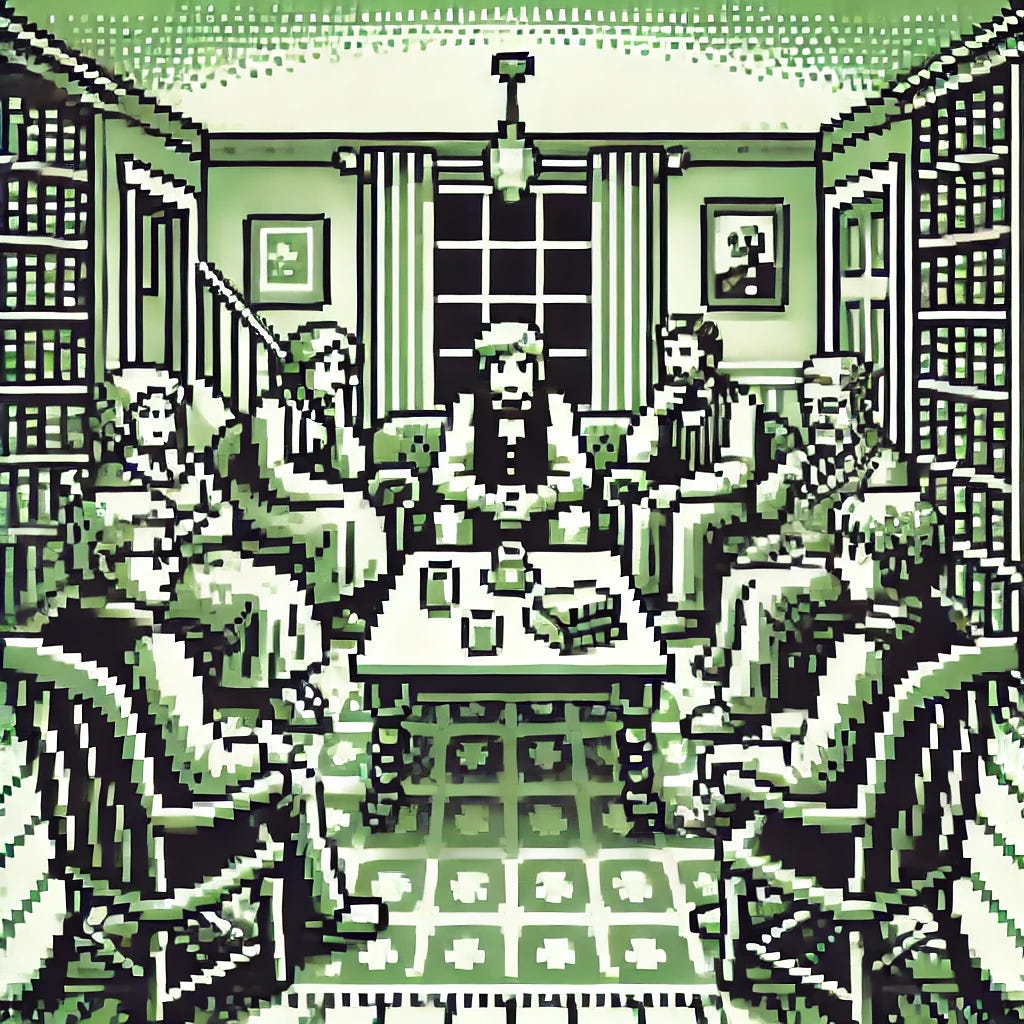Hello Gorgias! is a weekly newsletter devoted to writing, rhetoric, and long-form argument. If you’re enjoying my posts, please consider becoming a subscriber.
What’s the best way to explore a topic?
There’s a lot of value in deep reading, which is a way of thoughtfully, deliberately immersing yourself in a challenging or interesting text. But it’s equally important to practice lateral reading, which is when you evaluate (and cross-reference) evidence by reading lots of other texts on your topic.
Initially, it seems like these reading practices move us in completely different directions. Deep reading asks us to move vertically through a text, peeling back each layer. Lateral reading asks us to move horizontally across texts to survey different authors for a range of different opinions.
While they might seem like opposites, deep reading and lateral reading are two sides of the same coin. To properly appreciate how they’re related, we have to stop regarding theory texts as singular works of genius and recognize they emerge from an ongoing conversation around shared matters of concern.
In fact, the rhetorician Kenneth Burke famously uses the metaphor of an unending parlor conversation to describe intellectual discourse:
Imagine that you enter a parlor. You come late. When you arrive, others have long preceded you, and they are engaged in a heated discussion, a discussion too heated for them to pause and tell you exactly what it is about. In fact, the discussion had already begun long before any of them got there, so that no one present is qualified to retrace for you all the steps that had gone before. You listen for a while, until you decide that you have caught the tenor of the argument; then you put in your oar. Someone answers; you answer him; another comes to your defense; another aligns himself against you, to either the embarrassment or gratification of your opponent, depending upon the quality of your ally's assistance. However, the discussion is interminable. The hour grows late, you must depart. And you do depart, with the discussion still vigorously in progress.
There are two things to note about Burke’s metaphor:
The participants in the discussion are deeply engaged with what other folks in the room are saying.
Everyone is welcome to participate in the discussion, but participants pause and understand what other folks are saying before they interject with their own opinion.
Critical theory resembles Burke’s parlor. People pop into the discussion, leave when they have to, and return when they can, but the conversation has no fixed endpoint. It just keeps going.
So, when I say we can practice deep reading and lateral reading at the same time, I’m talking about exploring the series or network of texts that constitutes the conversation thus far. You can dive into a single work of theory, but you can also immerse yourself in the literature base around your topic.1
If you’re exploring the literature around your topic, you’ll also need some way to communicate your discoveries to your audience. Luckily, long-form argument has a specific genre convention designed to introduce readers to the ongoing discussion around your topic: the literature review.
A literature review is any part of the text that summarizes, quotes, or paraphrases a range of sources to introduce readers to the discussion around your topic. Remember, it’s not a comprehensive overview of everything that’s ever been said. It’s just enough to help the reader understand what’s currently happening in the parlor.
In next week’s post, I’ll begin describe the mechanics of the literature review in more detail. For now, you can start by reading horizontally: whenever you find a great source, try to read at least three books or scholarly articles that cite your author or reference the same topic.2
Good luck with your writing!
By literature base, I just mean the body of work connected to the conversation you’re contributing to — the texts you’re citing, interpreting, and analyzing as sources.
Substack posts and news articles don’t count.




